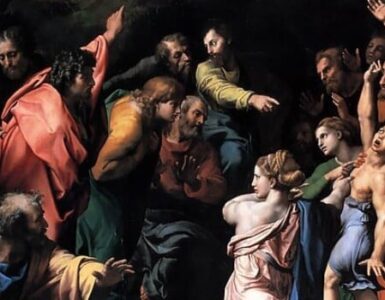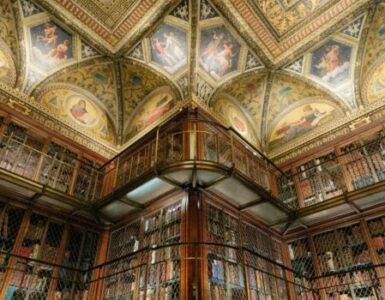It’s the season of joy and the time of good tidings, so why is the liturgical calendar for Christmas packed with so many martyrdoms?
Take a look at the calendar. The day after Christmas is the feast of St. Stephen, the first martyr of the Church, who was stoned to death. The following Monday marks the Holy Innocents, those babies of Bethlehem killed by the caprice of a tyrant. Next is St. Thomas Becket, whose head was sliced open by a sword near the altar of a cathedral in medieval England.
But the theme of martyrdom carries through even in other feasts for saints who technically are not martyrs. St. John the Apostle, who is celebrated the Sunday after Christmas, is considered a martyr by will. St. John Kanty, whose day is before Christmas Eve, longed to be a martyr.
It didn’t necessarily have to be this way. There is no historical date for the murder of St. Stephen. The same goes for the Holy Innocents. Becket’s feast day is on the anniversary of his death but the Church could have picked another date on which to remember him.
According to the Catholic Encyclopedia, scheduling these feast days around Christmas is intentional:
These dates have nothing to do with the chronological order of the event; the feast is kept within the octave of Christmas because the Holy Innocents gave their life for the newborn Savior. Stephen the first martyr (martyr by will, love, and blood), John, the Disciple of Love (martyr by will and love), and these first flowers of the Church (martyrs by blood alone) accompany the Holy Child Jesus entering this world on Christmas day.
But why Christmas? Why not the end of Lent? Certainly one could make a compelling argument for celebrating St. Stephen and St. John close to the day of the Lord’s Passion to which they were united, the one by blood, the other by will. So what is the Church trying to tell us?
One answer comes by considering what we really celebrate on the feast day for a martyr. Is it the day of their death? Well, yes, but it’s actually more than that. The history of one the Church’s other earliest martyrs clues us in on what exactly.
That martyr is Polycarp. As the story goes, he was sentenced to be burned but the fire would not consume his body, so he was pierced through the heart and then burned. One early account of his martyrdom recounts Christians collecting his charred bones and bringing them to a place where his martyrdom would be celebrated. But it wasn’t the anniversary of his death that was necessarily commemorated.
The early account puts it this way: “[M]ay God grant us to assemble with joy to celebrate the birthday of the martyr to his life in heaven!” (as cited in Butler’s Lives of the Saints).
Is this not truly what we celebrate in the feast day for a martyr? Not their death, but their birth into a new life—the abundance of eternal life in heaven. So, in a sense, it is a kind of birthday.
That is why, even though their deaths strikes a somber note in us, there is also a strong undercurrent of joy in these feast days. So explains Thomas Becket’s character in T.S. Eliot’s play, Murder in the Cathedral:
Just as we rejoice and mourn at once, in the Birth and in the Passion of Our Lord; so also in a smaller figure, we both rejoice and mourn in the death of martyrs. We mourn for the sins of the world that has martyred them; we rejoice, that another soul is numbered among the Saints in Heaven.
And that is why it is so fitting that we celebrate these martyrs around Christmas. Christ who was of heaven was born on earth so that those of the earth might be able to be born into heaven. Again: Christ was born to die so that those who unite their death to His might be born again into eternal life.
image: HUANG Zheng / Shutterstock.com













